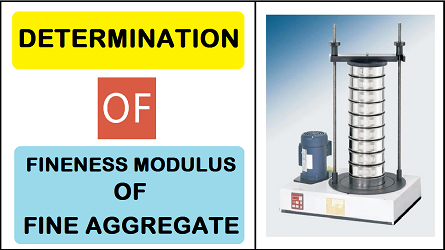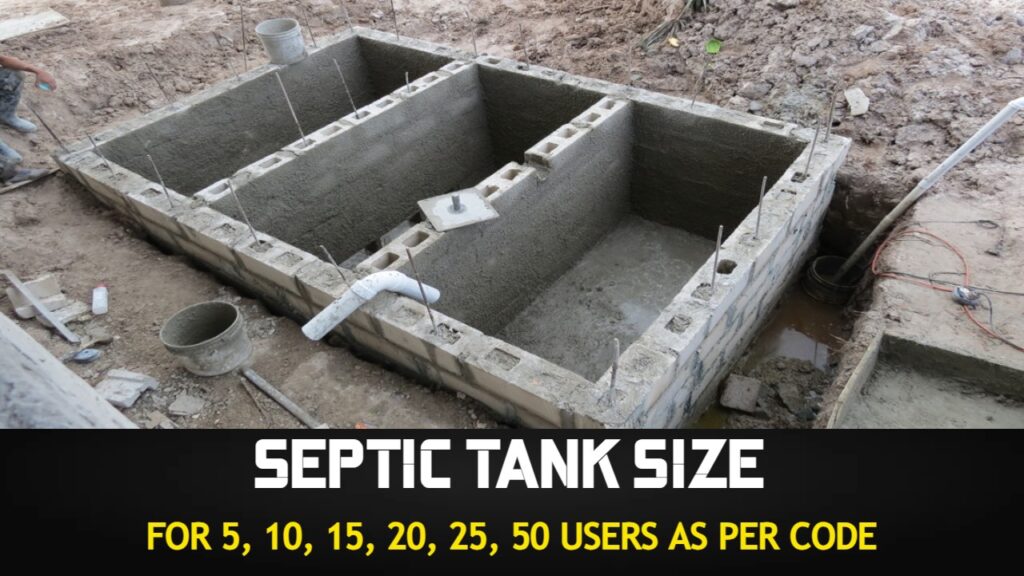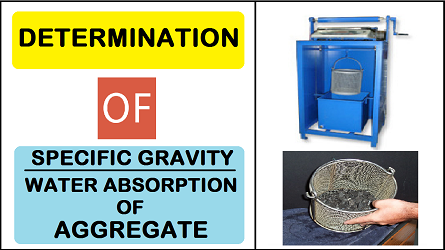Hello Friends, This is Mukesh from Learning Technology. I will tell you in today’s post, Determination of Fineness Modulus of a Sample of Fine Aggregate in a very easy way.
Contents
Objective of Experiment
The object of this experiment is to determine the fineness modulus and hence to plot the particle size distribution curve for the sample of fine aggregate supplied.
Theory
The fineness modulus of a sample of aggregate is an index number which is roughly proportional to the average size of particle in the aggregate, that is, coarser the aggregate the higher the fineness modulus. It is computed by adding the cumulative percentages coarser that each of the following IS test sieve 10 mm, 4.75 mm, 2.63 mm, 1.18 mm, 600 Micron, 300 Micron, 150 Micron and dividing the sum by 100. It is used for specification purposes and for controlling reading and uniformity and it is also used in a computation method of proportioning concrete.
Apparatus Required
1) IS test sieve 10 mm, 4.75 mm, 2.63 mm, 1.18 mm, 600 Micron, 300 Micron, 150 Micron.
2) Sieve shaker.
3) Weighing Machine.
READ MORE
- Determination of Normal Consistency of Cement
- Specific Gravity Test for Bitumen
- Bitumen Penetration Test – Consistency Test
- Softening Point of Bituminous Materials
- Aggregate Abrasion Value Test
- Flash and Fire Points of Bituminous Materials
- Determination of Flakiness and Elongation Index of Coarse Aggregates
Procedure
1 kg of dry fine aggregate is taken and sieve through IS sieves and the residues on each of the sieve are weight and the percentage and also the cumulative percentages retained on each of the sieves are calculated.
The sum of this cumulative percentage divided by 100 is the fineness modulus of the fine aggregate. The percentage by weight of the total fine aggregate passing through each of the sieves is calculated. These are plotted against the particle sizes using a logarithmic scale.
Observation
| Sieve Order No. | IS sieve size | Wt. of Sieve (W1) gm | Wt. of sieve & sand retained (W2) gm | Wt. of sand retained (W2-W1) gm | % Retained | Cumulative % retained | Cumulative % Passing | Fineness Modulus |
| 1 | ||||||||
| 2 | ||||||||
| 3 | ||||||||
| 4 | ||||||||
| 5 | ||||||||
| 6 | ||||||||
| 7 |
Precautions
1. The aggregate samples should be air-dried to prevent clogging in sieves.
2. Care should be taken to see that the sieves are not surcharged. The weight of the sand sample should not exceed 500 grams.
3. Sieves should be cleaned gently with soft brushes.
4. Sieving should be done by giving varied motion so that all particles get a sufficient chance of passing through the sieve opening (if done manually).
Report
Plotting of graphs: Cumulative percentage (Y-axis) versus sieve size (X-axis). The grading curve can be drawn for the given sample of sand.
Results
Size of sand at:
i) 10% finer than (D10) = …………… mm
ii) 60% finer than (D60) = …………… mm
iii) (D60 / D10) = Uniformity Coefficient, Cu = ……………
iv) Fineness Modulus = ……………
v) The given sand falls in the grading zone ……………
READ MORE
- Aggregate Impact Value Test as per IS 2386 (Part-IV) 1993
- Aggregate Crushing Value Test
- Water Content of Soil by Oven Drying Method
- Specific Gravity of Cement by Specific Gravity Bottle
- Sp. Gravity & Water Absorption Of Coarse Aggregate
- Sp. Gravity & Water Absorption of Fine Aggregates
Conclusion
Comment on test results obtained by you in the laboratory. Give your comments on the suitability of using the sand sample for the construction site.






